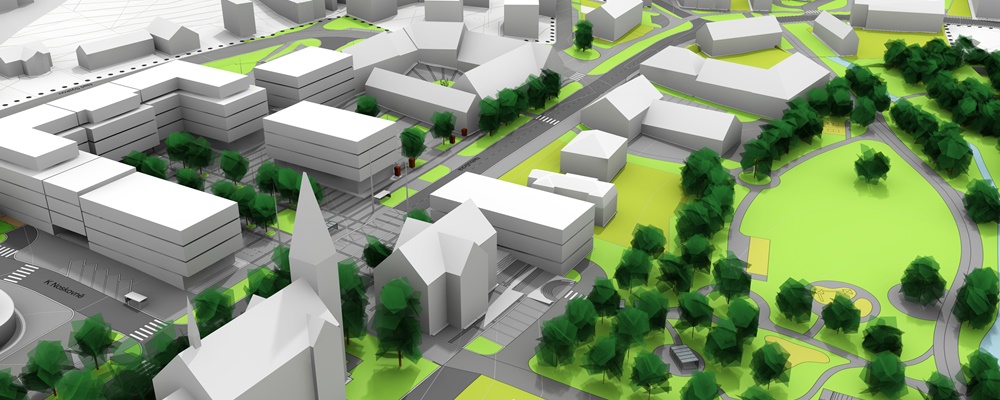Urban Drainage Planning for Growing Cities

Introduction to Urban Expansion and Water Challenges
As urban populations grow and cities expand, the demand on infrastructure—particularly drainage systems—intensifies. Urban development often replaces natural landscapes with impervious surfaces such as roads, rooftops, and parking lots. These surfaces prevent water from infiltrating into the ground, leading to increased surface runoff and heightened flood risks. In response, urban planners must adopt comprehensive drainage strategies that align with modern growth patterns while addressing environmental and public health concerns.
Contents
- 1 The Impact of Rapid Urbanization on Drainage Systems
- 2 The Principles of Urban Drainage Planning
- 3 Incorporating Green Infrastructure into Urban Planning
- 4 Integrated Drainage Networks and Urban Design
- 5 Addressing Drainage in Informal and High-Density Settlements
- 6 Role of Smart Technologies in Urban Drainage
- 7 Climate Change and Urban Drainage Resilience
- 8 Policy, Regulation, and Stakeholder Involvement
- 9 Conclusion
The Impact of Rapid Urbanization on Drainage Systems
Urbanization alters the hydrological cycle in significant ways. Natural soils that once absorbed rainwater are replaced by hard surfaces, reducing infiltration and increasing the volume and speed of runoff. This sudden influx of stormwater can overwhelm traditional drainage systems, leading to surface flooding, sewer overflows, and water pollution.
In older cities, existing drainage infrastructure may be outdated and undersized to handle new demands. In newly developing cities, the absence of planned drainage frameworks can lead to disorganized water flow, property damage, and long-term environmental degradation. Proper urban drainage planning is essential to mitigate these issues before they become critical.
The Principles of Urban Drainage Planning
Urban drainage planning involves the design and integration of systems that manage both stormwater and wastewater within a city environment. A successful drainage plan is built on key principles: reducing runoff at the source, safely conveying excess water, promoting water reuse, and protecting natural ecosystems.
Planning must begin early in the urban development process, taking into account topography, rainfall patterns, soil characteristics, population density, and land use. Planners also consider the capacity of receiving water bodies such as rivers, lakes, and sewers to absorb stormwater without flooding or contamination.
Incorporating Green Infrastructure into Urban Planning
Modern drainage planning increasingly embraces green infrastructure as a sustainable alternative to traditional grey systems. Green infrastructure techniques include green roofs, rain gardens, permeable pavements, bioswales, and urban wetlands. These features reduce surface runoff, improve water quality, and restore ecological balance.
In addition to their functional benefits, green infrastructure improves the aesthetics and livability of urban areas. Green spaces help regulate temperature, reduce air pollution, and provide recreational areas for residents. By mimicking natural processes, they create a more resilient and adaptive urban water cycle.
Integrated Drainage Networks and Urban Design
In growing cities, drainage systems must be part of a broader, integrated urban design strategy. Roads, buildings, and public spaces should be developed in coordination with stormwater infrastructure to prevent conflicts and inefficiencies. For example, roads can be constructed with built-in drainage channels, while parks and plazas can serve as temporary water storage zones during heavy rainfall.
Underground drainage networks must also be carefully planned to accommodate future population growth and development. This includes sizing pipes correctly, ensuring proper slope, and incorporating inspection points for maintenance. The integration of surface and subsurface drainage enhances the system’s overall capacity and reliability.
Addressing Drainage in Informal and High-Density Settlements
Many rapidly growing cities face challenges in managing drainage in informal settlements or high-density residential areas. These zones often lack basic infrastructure, with narrow pathways, inadequate slopes, and unregulated construction. Drainage solutions here must be low-cost, scalable, and adaptable to tight spaces.
Community-led initiatives can be instrumental in implementing localized drainage improvements, such as open drains lined with concrete, small soak pits, or basic stormwater harvesting systems. Public education on the importance of proper waste disposal is also critical to prevent blockages and contamination in these systems.
Role of Smart Technologies in Urban Drainage
Technology is transforming how cities plan and manage drainage. Smart drainage systems use sensors, data analytics, and real-time monitoring to detect issues such as blockages, overflows, and water quality changes. These systems enable quick response to flooding threats and facilitate predictive maintenance, reducing long-term costs and damages.
Geographic Information Systems (GIS) and computer modeling tools allow planners to simulate various rainfall and development scenarios. These simulations help identify vulnerable zones, test mitigation strategies, drains and gutters and make data-driven decisions for future infrastructure investments.
Climate Change and Urban Drainage Resilience
Climate change is intensifying weather events, with many cities experiencing more frequent and intense storms. Urban drainage systems must now be designed not just for average conditions but for extreme scenarios. Flood resilience strategies include increasing storage capacity, elevating critical infrastructure, and creating emergency overland flow paths.
Cities must also account for rising sea levels, particularly coastal cities that face tidal flooding risks. Drainage planning should incorporate flexible systems that can adapt to evolving climate patterns and protect both people and assets in vulnerable zones.
Policy, Regulation, and Stakeholder Involvement
Urban drainage planning requires coordinated efforts among municipal authorities, engineers, developers, and the public. Regulatory frameworks should mandate drainage assessments for new developments and enforce minimum standards for design and maintenance. Incentives can also be provided to encourage the use of sustainable and low-impact drainage practices.
Public awareness campaigns and community participation are vital for long-term success. Residents must understand the impact of improper waste disposal, illegal construction, and blocked drains on the overall health of the drainage system.
Conclusion
Urban drainage planning is a cornerstone of sustainable city development. As cities continue to grow, the need for forward-thinking, integrated, and resilient drainage systems becomes increasingly urgent. By combining traditional engineering with green infrastructure, smart technologies, and inclusive policies, urban planners can create environments that manage water efficiently, protect public health, and enhance quality of life. The cities of the future will be those that not only accommodate growth but also harmonize it with the natural flow of water.






